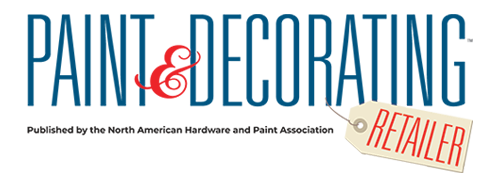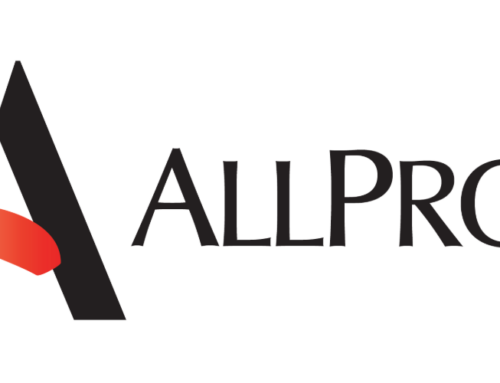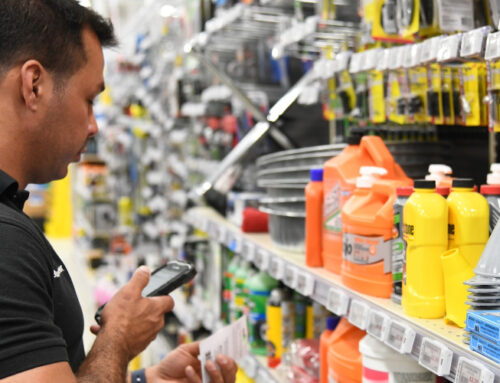Around 89% of shoppers have made an impulse purchase at some point, according to Capital One Shopping Research. At Norberg Paints in Sioux Falls, South Dakota, grabbing a piece of that impulse category hinges on simple strategies executed consistently.
From offering low-cost add-ons to maintaining eye-catching displays in both Norberg Paints stores, director Nick Hauert shares how he has curated a successful impulse category to encourage last-minute purchases that add up over time.
Optimize Product Placement
At both of Norberg Paints’ locations, impulse products are placed in multiple spots around the stores, but most importantly, on the checkout counter. Hauert merchandises boxes of inexpensive brushes, snap-off knives and rolls of painter’s tape on the counter to grab customers’ attention as they check out.
“We keep a low- to mid-level paintbrush that is more retail-oriented sitting on the counter at a discounted price,” he says. “Customers frequently purchase these items.”
Since Hauert started at Norberg Paints, he’s made an effort to have more impulse product options at his sales counter.
“In the past, we didn’t emphasize impulse products at our sales counter,” he says. “But in the last few years, we’ve made the effort to merchandise products where customers checkout, and it’s paid off.”
By placing low-cost accessories where conversations happen, employees can suggest products to customers who may not have considered what else they need for their projects. When employees see a customer buying paint or rollers, they’re trained to suggest a related item displayed on the counter.
“We train all our employees to mention the discounted price,” Hauert says. “It’s an easy add-on that customers weren’t planning to get, but decided to grab because it’s right there.”
Part of Hauert’s impulse sales training also includes finding the full scope of the customers’ project.
“If we know what they’re doing, then we’re able to add on relevant product suggestions and grab those extra sales,” he says.
Use Signage to Highlight Value
An eye-catching sign can make the difference between a product that gets ignored and one that flies off the shelf.
Hauert says a clean, brightly-colored sign with a large price tag and clear branding is essential.
“We have 40 brushes on our wall; it’s easy to overlook a box of brushes, but a bright sign with a clear price grabs their attention,” Hauert says.
Whether it’s an overstocked item or a special deal from a buying market, putting a product in the right location with strong visual clues helps the customer feel like they’re getting a deal, even if the markdown isn’t massive.
“For the impulse category, the actual price matters less than the perceived value of what they’re buying,” he says. “I’ve found that customers care more about the value they believe they’re getting than how much I’ve marked it down by. I always focus on the impression of the deal they’re getting.”
Rotate Products and Test What Works
Hauert says he regularly rotates new products, often based on the amount they have in stock, deals he finds through his buying group and conversations with other retailers.
“If I’m ordering something from my buying group and I see a product that looks like a good deal, or it’s a show special, I’ll order a box and test it out as an impulse buy,” he says. “The deals I get from buying at shows make it easy to put them in my store as an impulse buy because I’m already getting it at a discount, so it’s easier to mark down.”
At markets, Hauert uses networking time to connect with other retailers and learn about their businesses, and he uses those relationships to improve his impulse category.
“I talk with several other owners regularly, and we let each other know about good deals coming up and how other products performed in their stores,” he says. “It’s great to have those relationships because it helps everybody.”
Hauert also utilizes dump bins and mini displays in other sections of his store to create more opportunities for impulse shopping. Products like sanding sponges, sprayer tips and tape often get featured in rotating displays near related products.
“A high percentage of retail customers who get paint from us buy something from one of our impulse displays,” Hauert says. “If you can add $5, $10 or $15 to a transaction, that’s a win.”
Impulse Buying by the Numbers
- 80% of consumers shop impulsively in brick-and-mortar stores.
- 70% of consumers have impulsively bought an item because it was on sale.
- 36% of Americans say the majority of their purchases are unplanned.
- 35% of consumers say impulse purchases are driven by popular trends.







